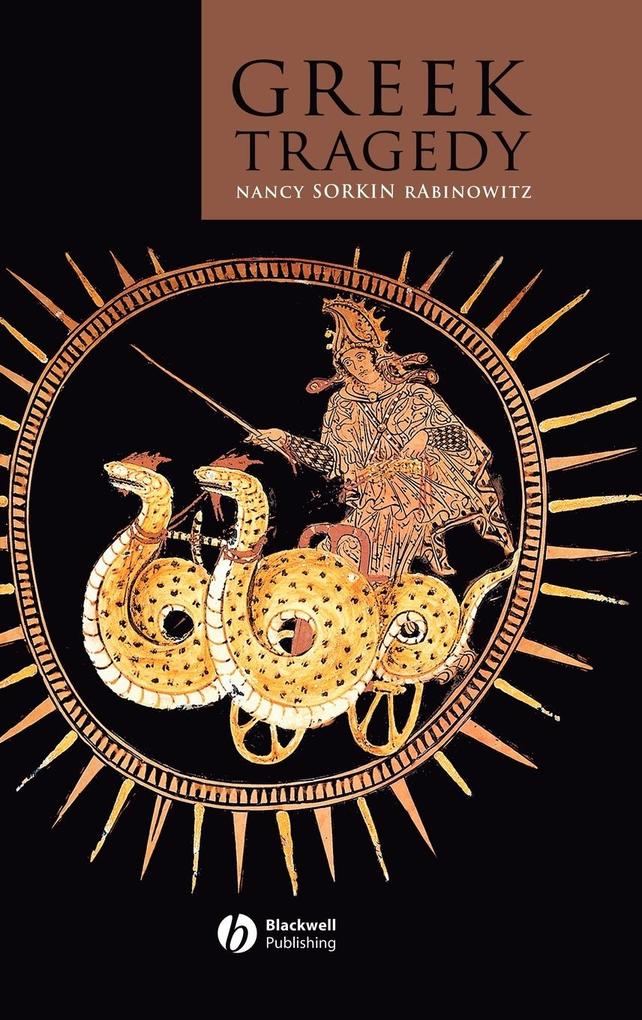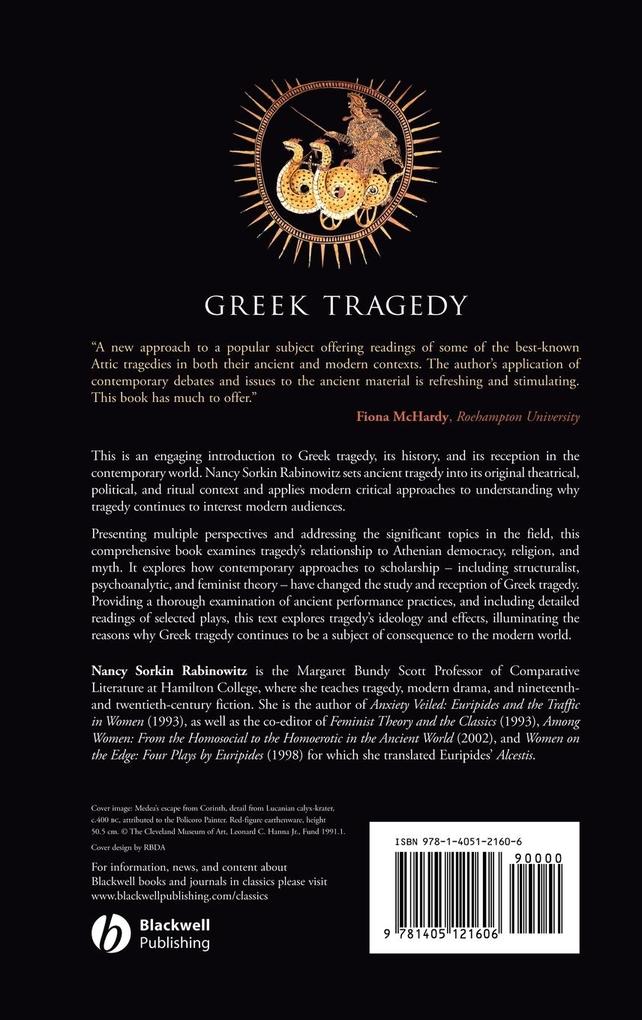
Zustellung: Di, 03.06. - Sa, 07.06.
Versand in 2 Wochen
VersandkostenfreiBestellen & in Filiale abholen:
This is an engaging introduction to Greek tragedy, its history, and its reception in the contemporary world. Nancy Sorkin Rabinowitz sets ancient tragedy into its original theatrical, political, and ritual context and applies modern critical approaches to understanding why tragedy continues to interest modern audiences. Presenting multiple perspectives and addressing the significant topics in the field, this comprehensive book examines tragedy's relationship to Athenian democracy, religion, and myth. It explores how contemporary approaches to scholarship - including structuralist, psychoanalytic, and feminist theory - have changed the study and reception of Greek tragedy. Providing a thorough examination of ancient performance practices, and including detailed readings of selected plays, this text explores tragedy's ideology and effects, illuminating the reasons why Greek tragedy continues to be a subject of consequence to the modern world.
Inhaltsverzeichnis
List of Figures. Preface.
Introduction.
Part I Tragedy in Its Athenian Context.
1 What Was Tragedy? .
Definitions of Tragedy.
What Did It Do? .
Where Did It Come From? .
How Were the Plays Performed? .
2 Tragedy and the Polis.
Democracy.
Empire and Hegemony.
Performance Setting.
Rhetoric.
Referentiality.
Ideology.
Nothing to Do with the City? .
3 Tragedy and Greek Religion.
Dionysos.
Sacred Time and Space.
Ritual Practices.
Ritual Practice in Tragedy.
Greek Gods and Mortals.
Tragedy and Myth.
Euripides' Bacchai.
Part II Thematic Approaches.
4 War and Empire.
Aeschylus' Persians.
Aeschylus' Oresteia.
Euripides' Iphigeneia at Aulis.
5 Family Romance and Revenge in the House of Atreus.
Euripides' Elektra.
Sophocles' Elektra.
6 Victims and Victimizers.
Euripides' Trojan Women.
Euripides' Hekabe.
Euripides' Medea.
7 The King and I.
Sophocles' Antigone.
Sophocles' Oedipus Tyrannos.
8 Epilogue: Modern Performances (with Sue Blundell).
References.
Index
Introduction.
Part I Tragedy in Its Athenian Context.
1 What Was Tragedy? .
Definitions of Tragedy.
What Did It Do? .
Where Did It Come From? .
How Were the Plays Performed? .
2 Tragedy and the Polis.
Democracy.
Empire and Hegemony.
Performance Setting.
Rhetoric.
Referentiality.
Ideology.
Nothing to Do with the City? .
3 Tragedy and Greek Religion.
Dionysos.
Sacred Time and Space.
Ritual Practices.
Ritual Practice in Tragedy.
Greek Gods and Mortals.
Tragedy and Myth.
Euripides' Bacchai.
Part II Thematic Approaches.
4 War and Empire.
Aeschylus' Persians.
Aeschylus' Oresteia.
Euripides' Iphigeneia at Aulis.
5 Family Romance and Revenge in the House of Atreus.
Euripides' Elektra.
Sophocles' Elektra.
6 Victims and Victimizers.
Euripides' Trojan Women.
Euripides' Hekabe.
Euripides' Medea.
7 The King and I.
Sophocles' Antigone.
Sophocles' Oedipus Tyrannos.
8 Epilogue: Modern Performances (with Sue Blundell).
References.
Index
Produktdetails
Erscheinungsdatum
01. Februar 2008
Sprache
englisch
Seitenanzahl
231
Autor/Autorin
Nancy Sorkin Rabinowitz
Verlag/Hersteller
Produktart
gebunden
Gewicht
519 g
Größe (L/B/H)
240/161/17 mm
ISBN
9781405121606
Entdecken Sie mehr
Pressestimmen
"Nancy Sorkin Rabinowitz has made a most useful contribution to the field... An insightful discussion of tragedy which is up-to-date with scholarly developments and academic debate, which offers helpful modern parallels throughout in connection with political and social issues." (Scholia Reviews, 2009) "A new approach to a popular subject offering readings of some of the best-known Attic tragedies in both their ancient and modern contexts. The author's application of contemporary debates and issues to the ancient material is refreshing and stimulating. This book has much to offer." Fiona McHardy, Roehampton University "As a supplement ... [it's] a vein of gold. [The author's] nuanced familiarity with every aspect of the topic of Greek drama is breath-taking." (About.com)
Bewertungen
0 Bewertungen
Es wurden noch keine Bewertungen abgegeben. Schreiben Sie die erste Bewertung zu "Greek Tragedy" und helfen Sie damit anderen bei der Kaufentscheidung.











